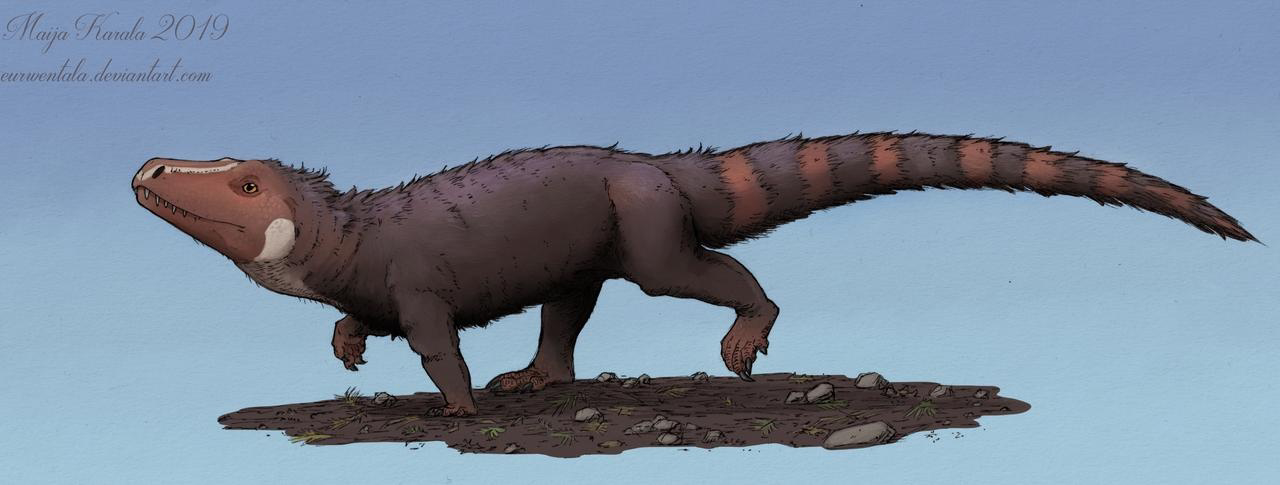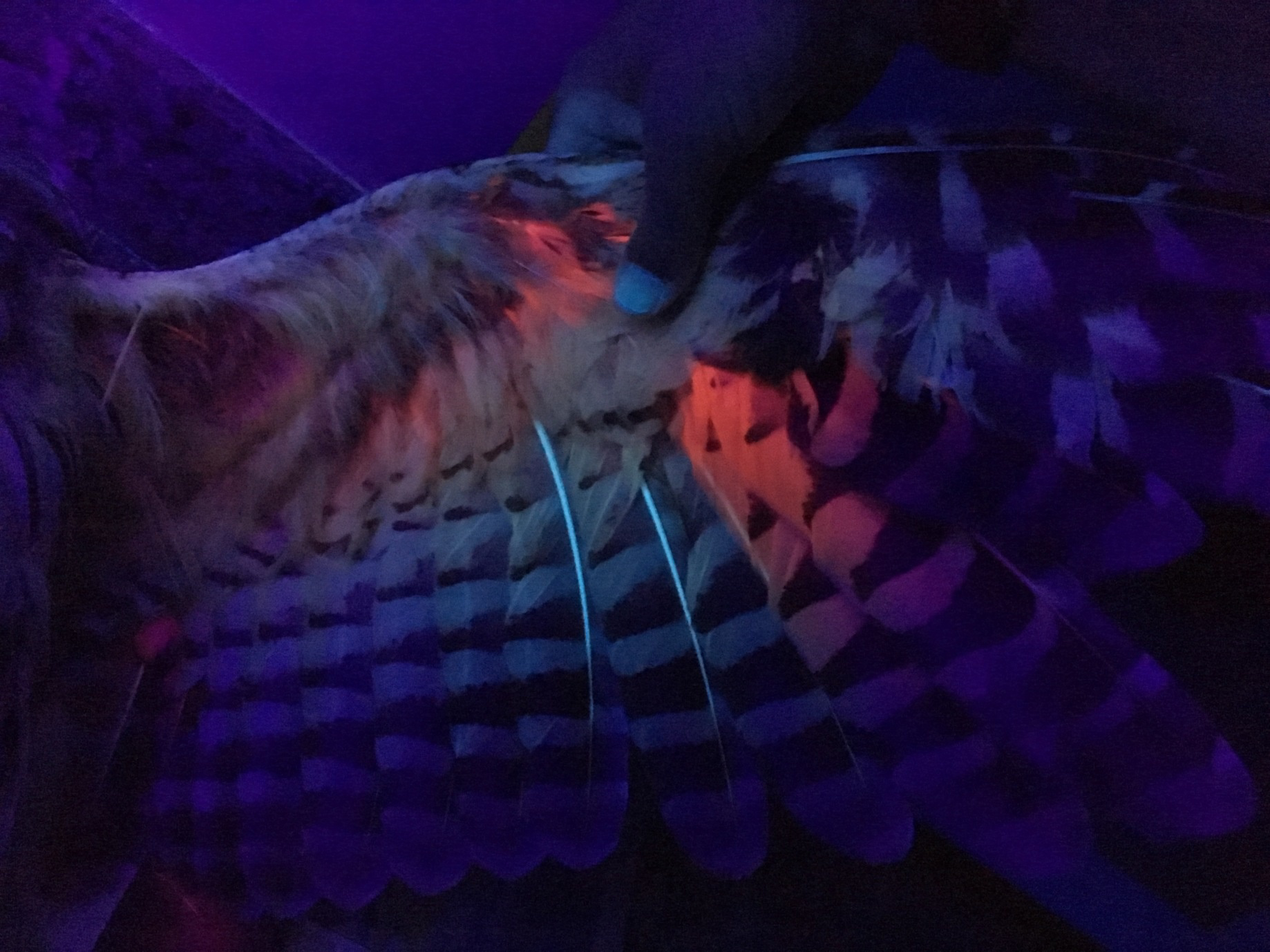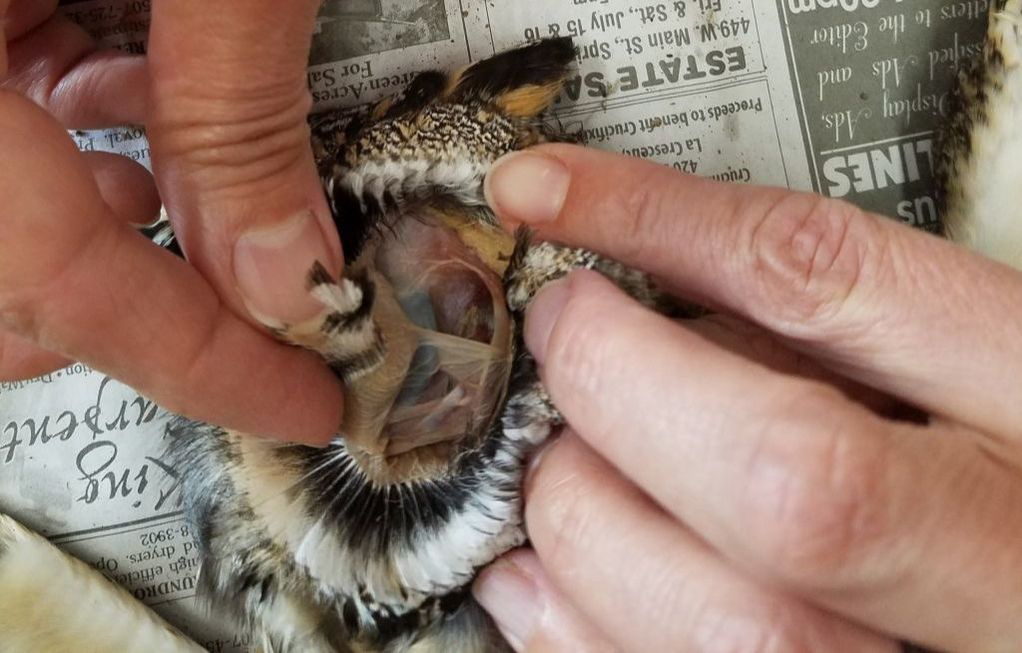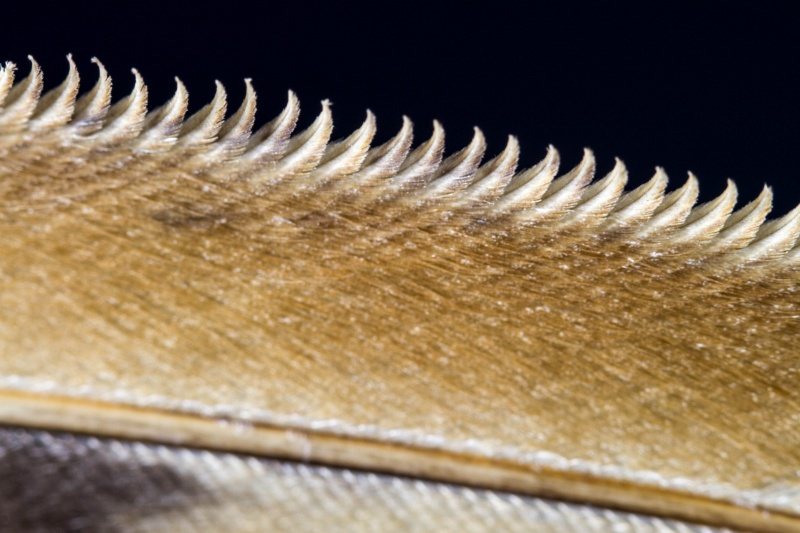After the last mega post, someone mentioned feathers as the next topic. I was amazed at the response the first write up got, so here we are again. Just a reminder, I'm not any kind of expert, so ask this is from a couple days of Internet research. If you feel I've posted something incorrect, let me know. Otherwise, I hope you enjoy!
If you didn't check out the other post today with the video, watch it here before or after reading this to see a visual demonstration of some of these abilities in action.
What Are Feathers
Feathers are probably the first thing we think of when we think about what makes birds unique from other animals. After all, they are the only living creatures to have them. Some dinosaurs and archosaurs also had feathers, so they’ve been around for a very long time. These protofeathers were most likely used to regulate body temperature.

Teraterpeton (approx. 230,000,000 BC) Note the proto feather fuzz along the topside.
Feathers are the result of follicles that produce keratin in specific sections of the skin. That is the same substance that also makes up the bird’s beak and claws, as well as reptile scales, mammal hair, horns, and hooves in those respective animals.

New feather growing out of keratin sheath (called a pin feather.)
Structure
Feathers are arranged in tracts, not spread evenly across the whole bird. Arrangements are different between species, and patterns are used to indicate evolutionary links between different birds.

Chart showing feather tracts and some general body parts.
There are 2 basic types of feathers, vaned feathers, and down feathers.
Vaned feathers have progressively smaller offshoots coming off the vane (called the rachis) called barbs and barbules. These structures will cross hatch and add rigidity and structure giving the bird its shape and provide strength for the pressures involved with flight. Feathers will be firm on downstrokes, but flex on upstrokes, increasing efficiency.

Simplified basic feather diagram

Eagle Owl feather magnified 150x showing barbs and barbules
Down feathers are fluffy due to lack of barbicles and a much thinner rachis. The spaces in this mesh of fluff leaves room to trap air to provide insulation to the bird.
Molting
Feathers are subject to wear and damage and are replaced in a process called molting. Birds do not lose all their feathers at once. It happens over about 3 months each year and occurs in an order that does not heavily impede the ability to fly or hunt. Some small owls will drop all tail feathers at once. New feathers start from a keratin sheath called a pin feather.
Barn owls molt wing feathers from the inside out. Other owls molt from the middle of the wing out to the tip and the body.

Color differences allow to see new/old feathers.
Functions of Feathers
Flight
Owls have proportionally larger and rounder wings than most birds. This high surface area to mass ratio makes them more buoyant, in turn requiring less flapping to fly, and extending glide time.
Thermal Insulation
Feathers insulate the bird itself by trapping air warmed by the owl’s body heat. This retained heat also is why birds sit on their eggs and chicks. It keeps eggs at proper hatching temperature, and the babies are not born with feathers, just a little temporary down that will eventually be replaced with actual feathers.
Waterproofing
Birds have a preening gland that secretes an oil the birds rub on their feathers. This coats the barbules and waterproofs the bird.
Coloration
A bird’s colors help in communication and protection. Some birds use color to attract attention. Owls most seem to use their coloring to blend into their environment. Coloring serves as camouflage to hide while sleeping and to stay hidden from prey.
Color comes from pigments (carotenoids, melanins, and porphyrins) in owls, while some other birds also have structures that refract light, causing iridescence. The browns in many owl feathers is froma combination of melanin and porphyrin pigments. Porphyrins reflect UV, so those colorations would appear more colorful to birds, as they can see light in the UV spectrum.

Barred Owl wing under UV light. This is closer to what birds would see.
Types of Feathers
Pennaceous feathers, also called contour feathers, are vaned and cover entire body. These are the longer, outermost feathers someone will likely picture when they think of a feather.
Semiplumes are a cross between down and contour feathers, filling in gaps and providing insulation.
Filoplumes are more hairlike. They are mostly found on the head, neck, and trunk. Not all birds have filoplumes. It is thought they are used like cat whiskers, aiding in pressure and vibration sensing. On owls, filoplumes are found at the base of the beak and the feet.
Bristles are tiny feathers with thick shaft. They are found at the base of beak, around the eyes, and the eyelashes. They help protect the eyes and aid the senses.

Bristles around eye and beak of a Boobook.
Down traps air to provide insulation. Owls have less down than other birds, and instead have more barbules on contour feathers closest to the skin.

Feather type examples.
Unique Owl Feathers
Some owls have ear flaps with feathers that protect the inner ear and base of the eyes. Owls have tubular eyes instead of round eyes, and many species will have eyes extending back into the ear opening.

Feathered ear flap of a Long Eared Owl. The bluish thing is the back of the eye.
Plumicorns, or ear tufts, have nothing to do with hearing as they aren’t next to the actual ears and are used for communication and camouflage.
Stiff facial disc feathers help direct sound to the ears. The feathers can be manipulated to hear better at different distances.

Barn owl facial disc and ear opening relation
Owls have unique leading edge to the wings called fimbriae, meaning fringe. This breaks up turbulence over the wing into micro turbulence, eliminating noise. The trailing edge also has a similar fringe. Down on some owls’ legs also functions to dampen sound.

Fimbriae on Barn Owl wing.
Possession of Owl Feathers
In the US, possession of any part of a bird is illegal under the Migratory Bird Treaty act and you can be fined and charged with a misdemeanor or felony depending on the species. This applies even to found feathers or ones from birds that died of natural or unnatural causes. There are some exceptions for hunting and there is a permitting process for research, education, or religious purposes, though it sounds difficult for an individual to acquire.
Sources
To Fuzz or Not to Fuzz: A Guide to Archosaur Integument
Anatomy and feather structure in a road-killed Barred Owl


Holy heck, if you want to read conflicting information, Google "owl preening waterproof"!
I think this is one of those complex answers with a lot of fine detail. I know even the fish owls try to not get too wet. I'm sure every bird's preening oil is a bit different. I can't even find a straight answer if keratin itself is waterproof.
I did find a few ideas:
I'm thinking the physical feather may be waterproof, but those barbicles are so close together, I'm sure water will hook onto those gaps from surface tension. With that, and owls bring up to 70% feathers by volume, you end up with a heavy bird even if the water doesn't actually soak in. Either way, weight not conducive to flight. Even if they can fly, it's going to use way more energy.
Living indoors, I overlook exposure as a source of danger, but this makes a lot of sense.
Can Owls Fly in the Rain?
I'll have to do some more reading on this to find out more.